Anger is only the tip of the iceberg! 生气只是冰山一角!(shēngqì zhǐ shì bīngshān yī jiǎo) (literally: anger only is iceberg one angle/tip)
My kids have hit their tweens, no explaining needed then why this was a good little project for us to do! But whether a toddler, tween, teen, adult…we all get angry! It’s nice that we are starting to take our mental health very seriously with programs like ‘Movember’, ‘Man Up’ etc. encouraging people to TALK about their feelings. This ‘iceberg’ project is a fantastic analogy to understanding that when we are ‘angry’, it is displayed for all of us to see. More often than not though, anger is a secondary emotion to many primary emotions that are not so easy to see!
In Chinese we can say 看不到的感觉 (kān bù dào de gǎn jué) ‘feelings we don’t see’.
Having this big iceberg on our classroom wall now, can help us to identify what emotion may have triggered our little anger outburst…and TALK about it. It was also a really good way to learn some new words for emotions in Mandarin, in a really important meaningful mind and matter context!
The ‘talking about’ these hidden feelings is the important bit, so in Chinese we can say 你可以和家谈论看不到的情感。(nǐ kě yǐ hé jiā tán lùn kān bù dào de qíng gǎn) ‘You can talk about the feelings that can’t be seen with your family’
This project could be done with any age group, just using age appropriate words. And we need to do stuff like this with our little boys and girls so that they can build on these skills into adulthood. My kids now love to identify the triggers for Mum and Dad’s little outbursts too! Helping us with our emotional talk, as ‘we’ adults are certainly a generation that never learned how to talk about our emotions!
Here are some more piks of our iceberg, followed by a table of the primary emotions my kids and I picked that we sometimes are feeling that can lead to feeling anger, to put on our iceberg. It was good to look at other Anger Icebergs on google and identify emotions that the kids had felt, but never been able to label before!
| 羞愧 | xiū kuì | Ashamed | 无助 | wú zhù | Helplessness |
| 伤心 | shāng xīn | Hurt | 感到压力 | gǎn dào yā lì | Pressured |
| 嫉妒 | jí dù | Jealous | 担心 | dān xīn | Worried |
| 尴尬 | gān gà | Embarrassed | 害怕 | hài pà | Scared |
| 累了 | lèi le | Tired | 失望 | shī wàng | Disappointed |
| 紧张 | jǐn zhāng | Nervous | 没信心 | méi xìn xīn | Insecure |
| 限制 | xiàn zhì | Trapped | 无视 | wú shì | Ignored |
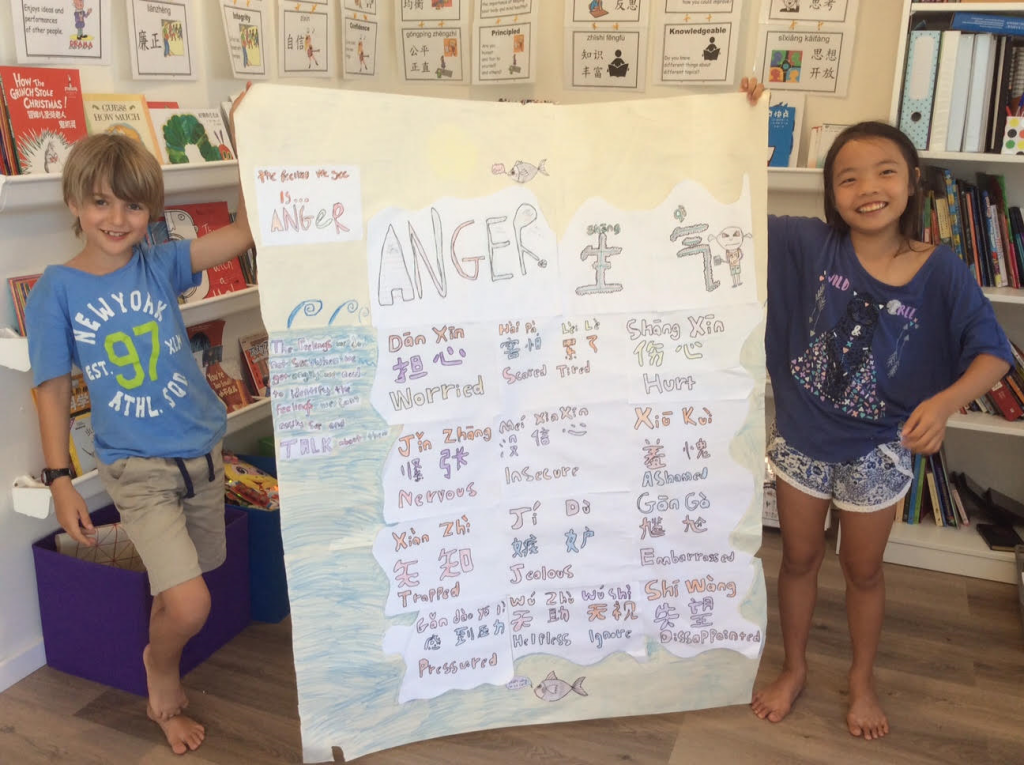
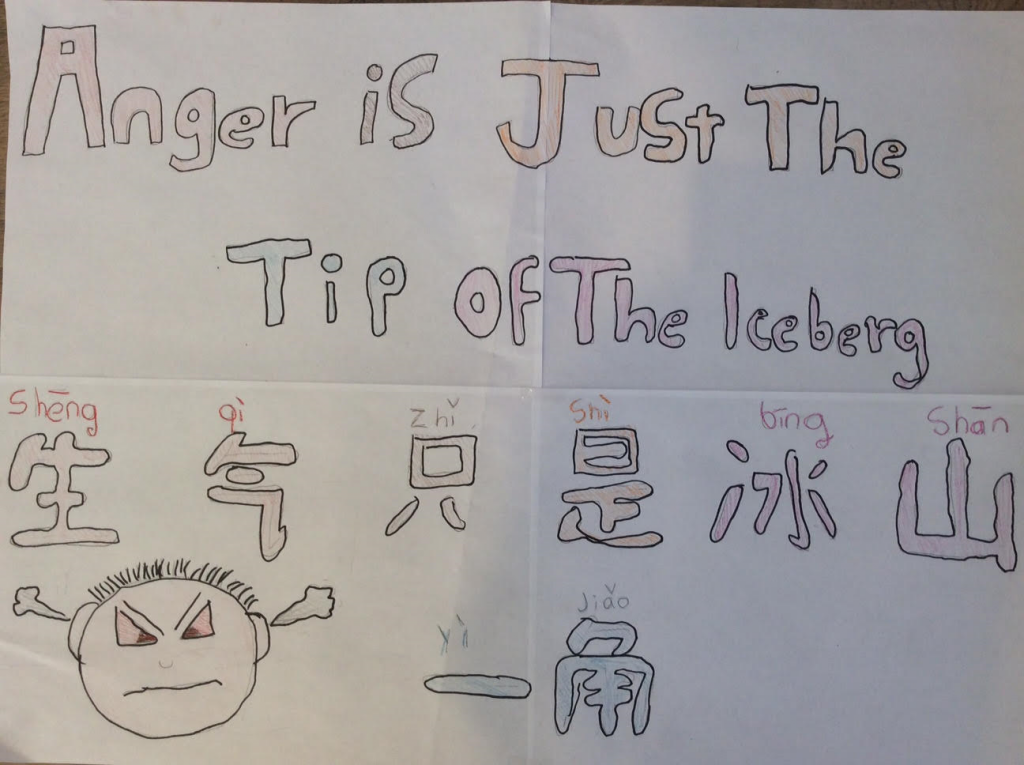
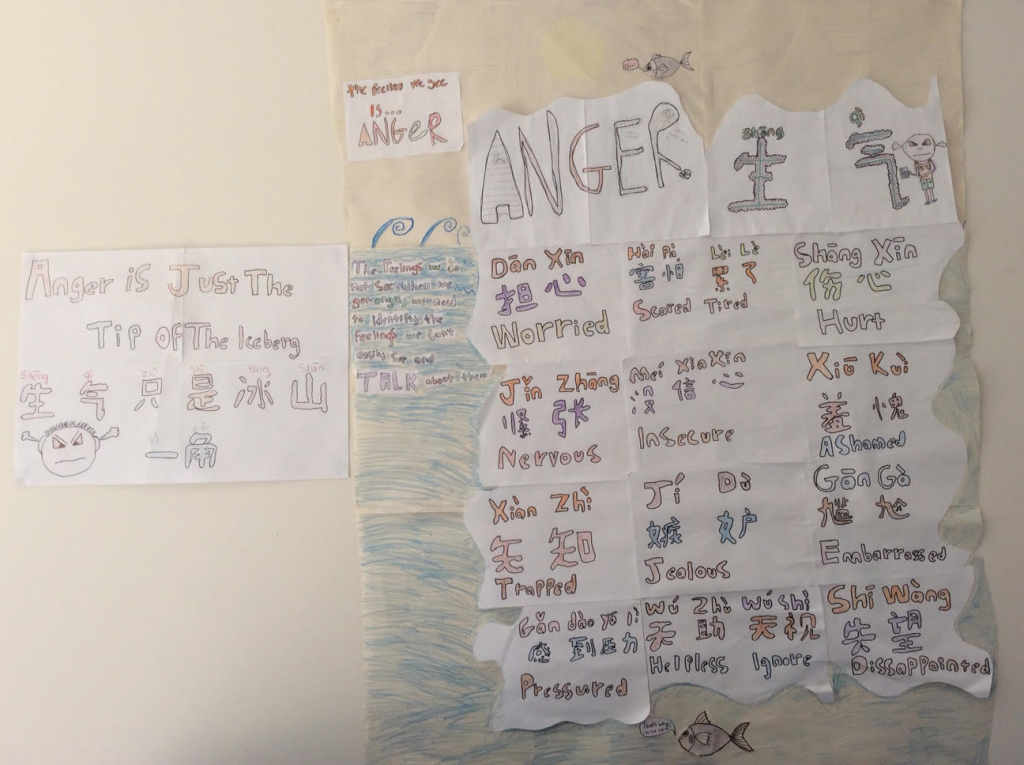
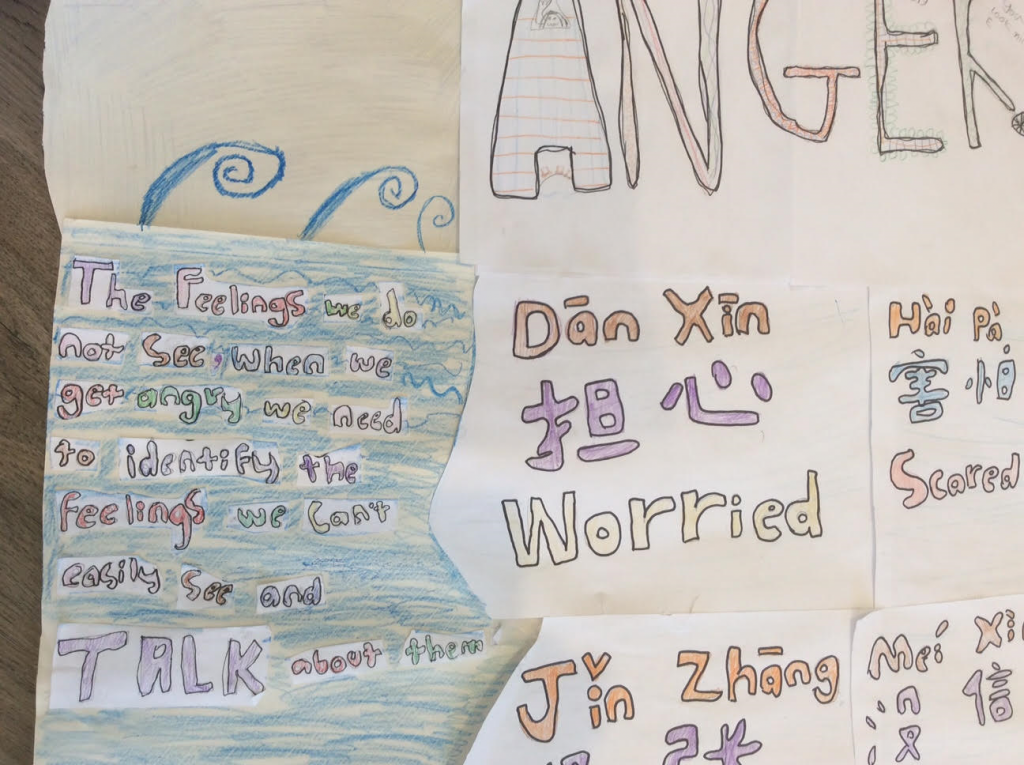
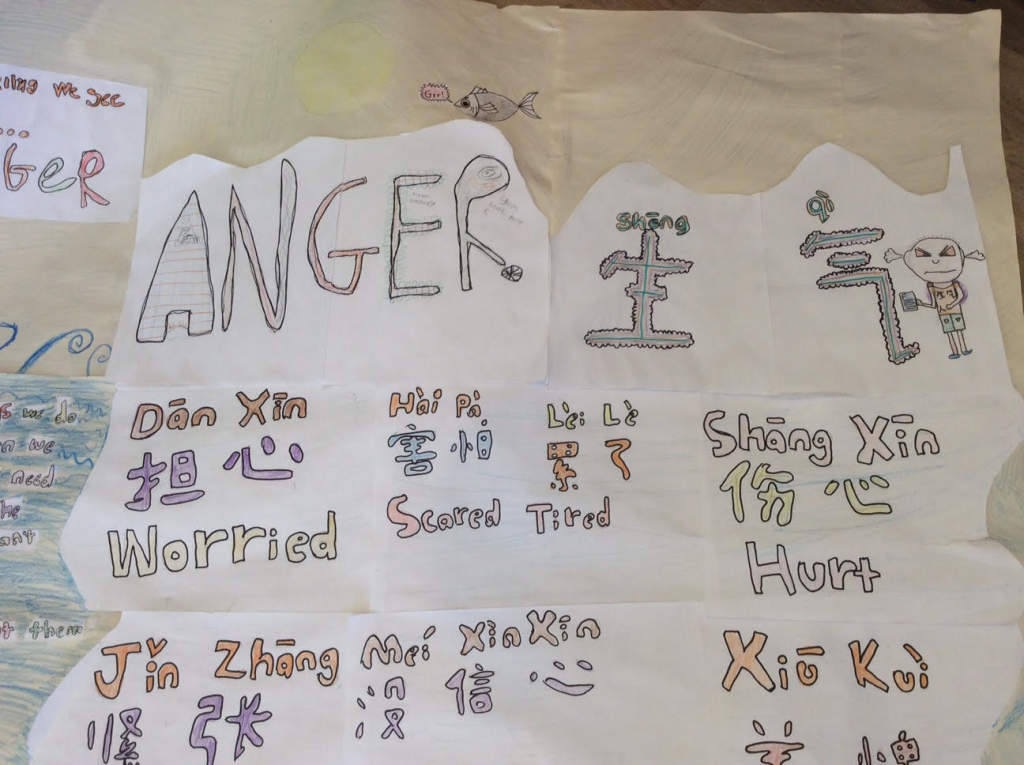
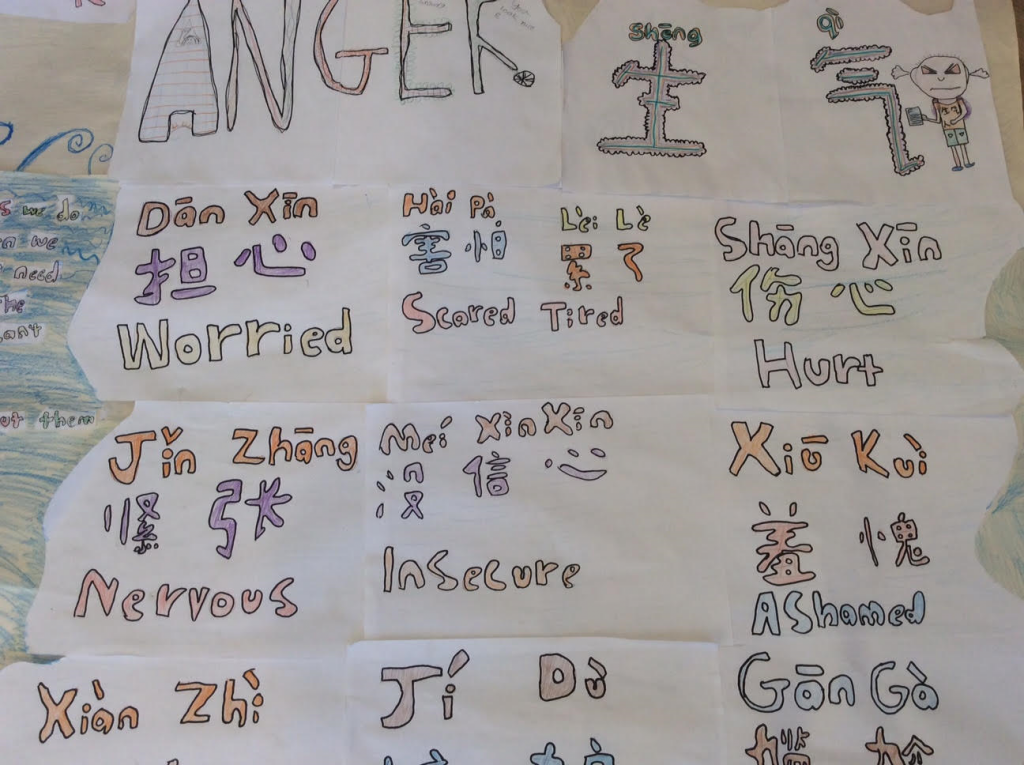
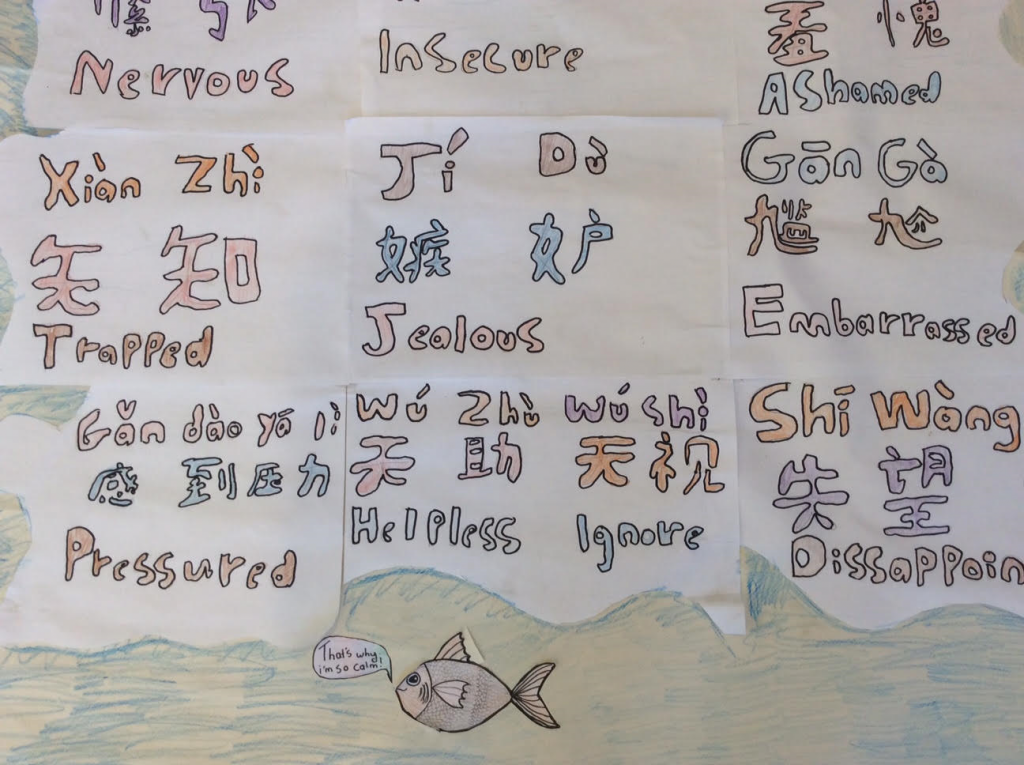
Awesome task. Did you have one where the focus was on more positive emotions?
Hi T Nguyen, thanks for your feedback! We haven’t done a specific task in mandarin with a focus on positive emotions, but do come across them naturally anyway in regular tasks. I don’t think we talk enough about mental health and the underlying emotions that can cause us mental health problems, this just seemed a great way to get the kids to identify and label these feelings in a visual analogy, and learn some Mandarin too! If you have any ideas of what you might do to talk about positive emotions would love to hear! Thanks again, Donna